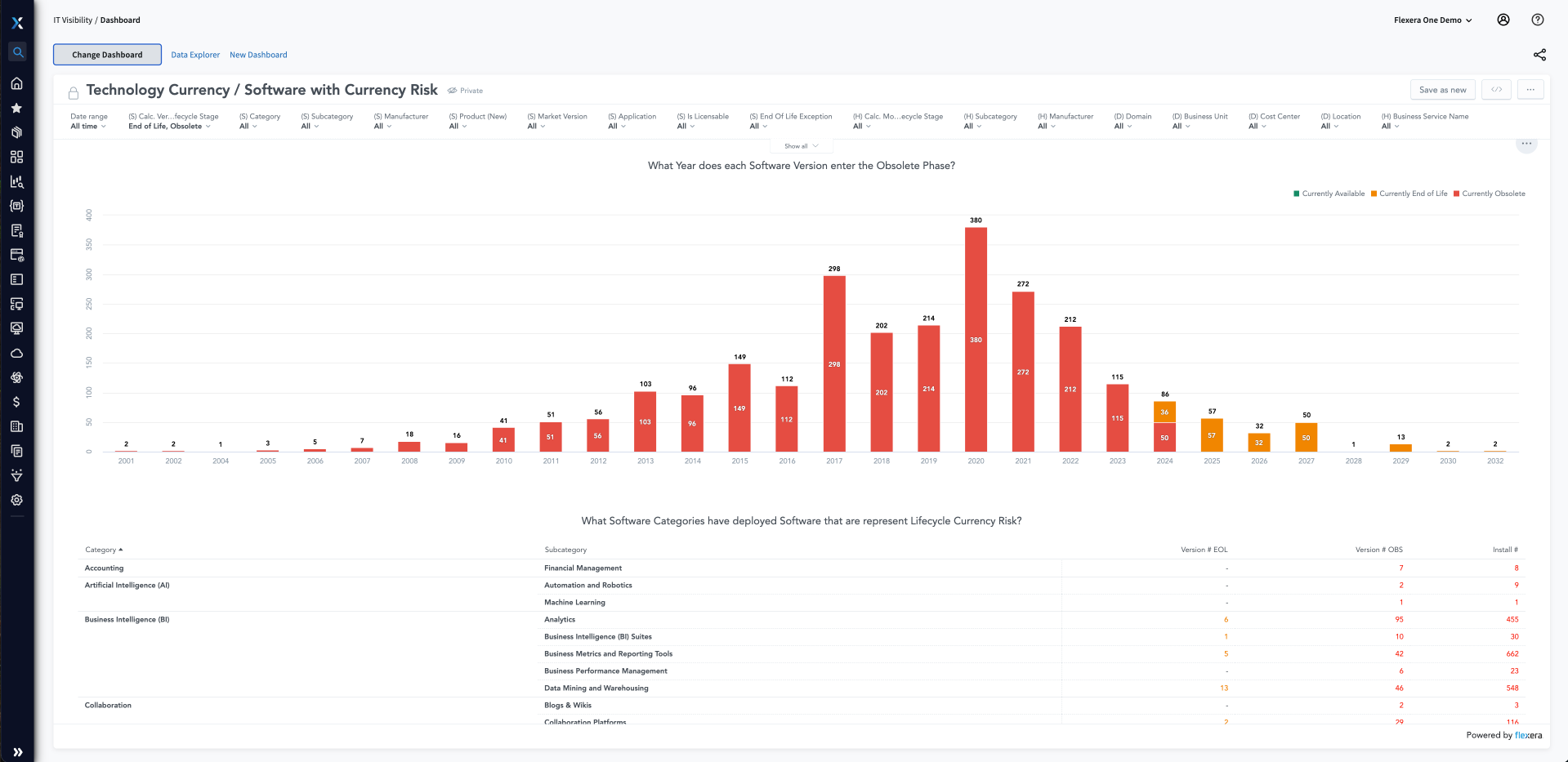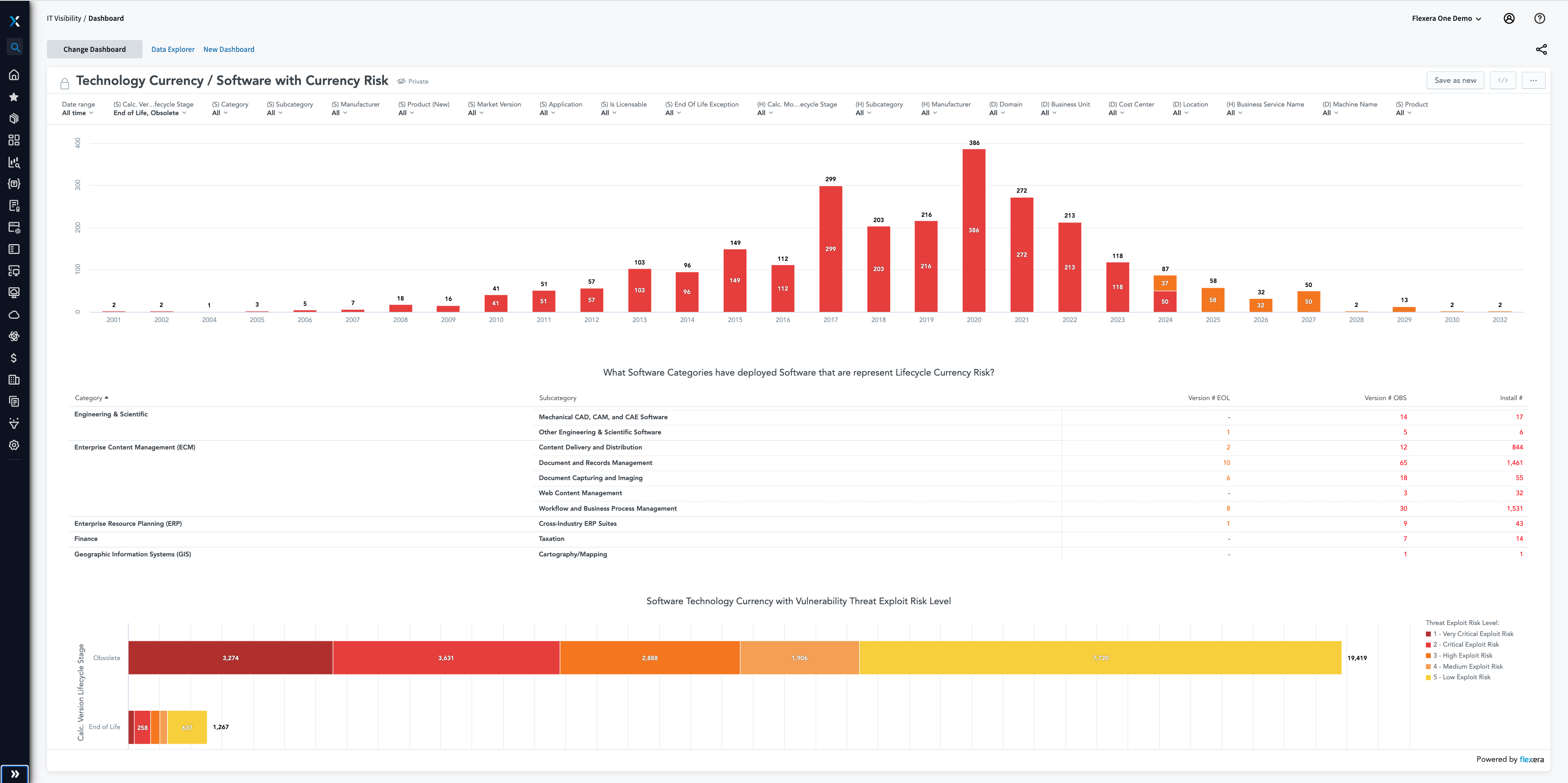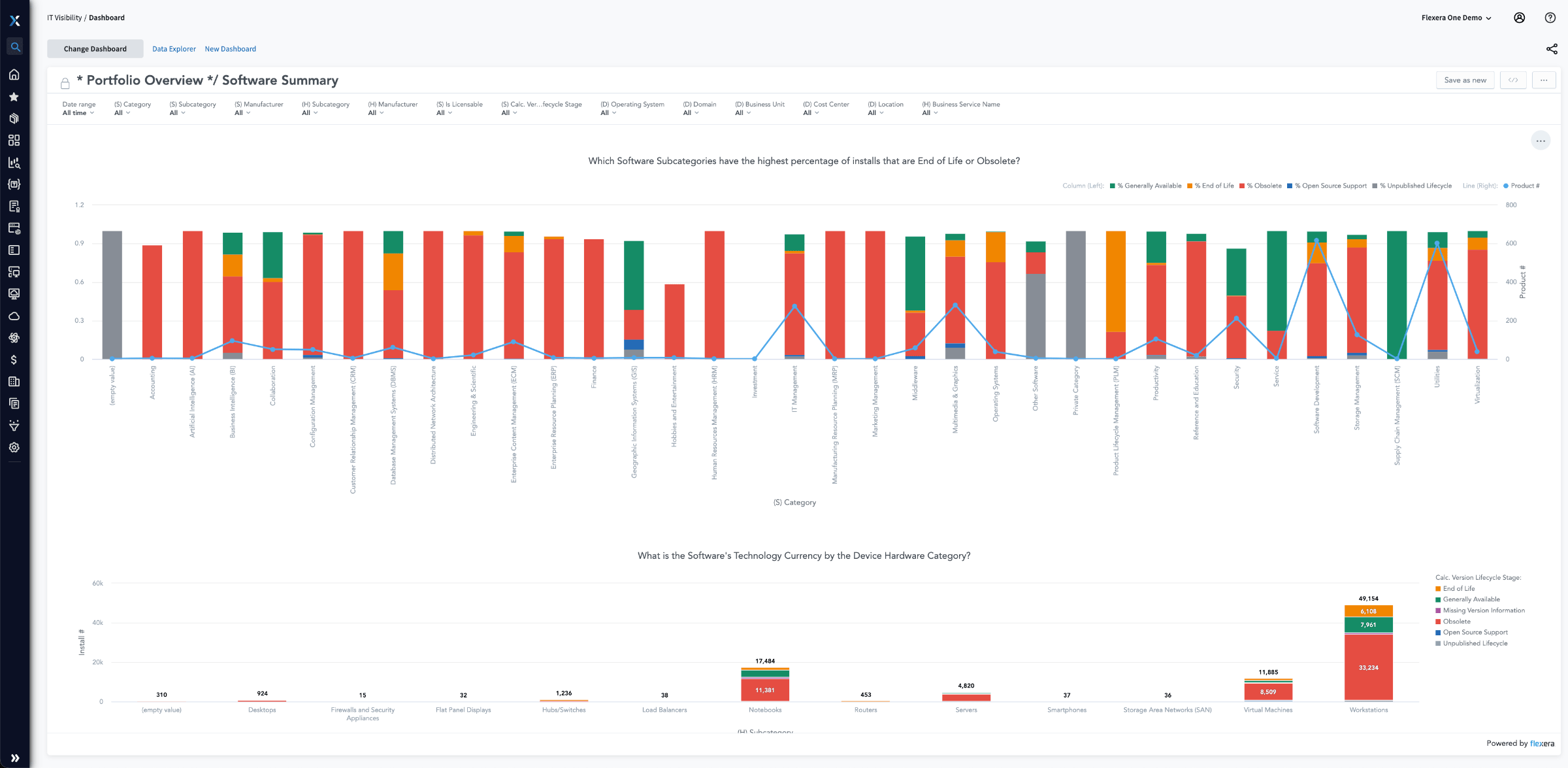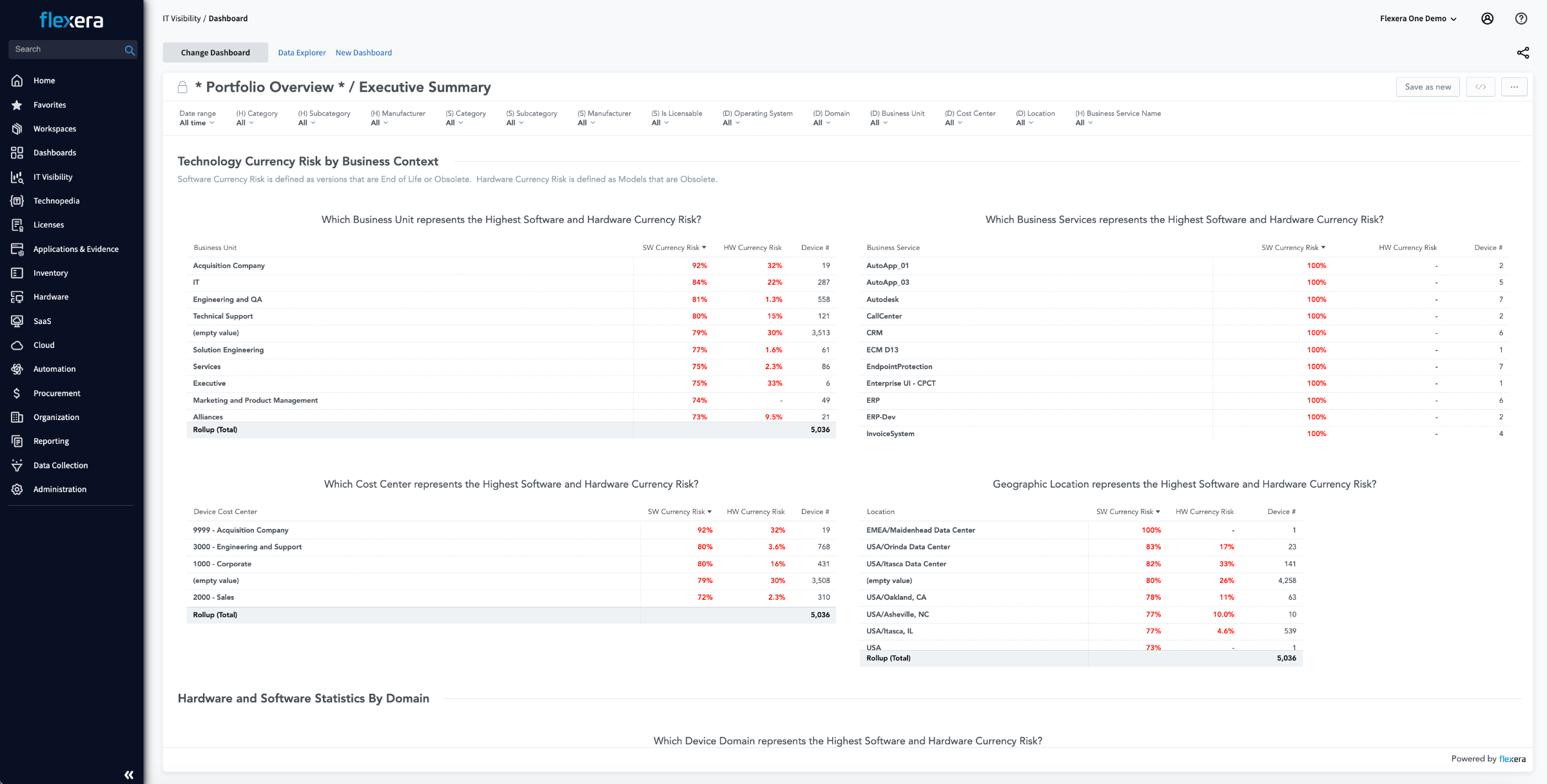Software lifecycle management
Optimize your software lifecycle from acquisition to retirement
It’s crucial to stay vigilant and manage your software assets effectively. One often overlooked aspect is identifying and handling end-of-life (EOL) and end-of-support (EOS) software applications, often referred to as software lifecycle management (SLM).
Recommended Products
Recognize and mitigate the risks associated with EOL software
Identify risky inventory immediately
Overcome the challenges of discovering EOL/EOS
EOL and EOS assets refer to software applications that have reached their expiration date, either due to vendor discontinuation, obsolescence or strategic changes within an organization. Ignoring these assets can lead to various risks, including security vulnerabilities. Identify EOL and EOS software with ease leveraging Flexera Technopedia data.


Gain a holistic view
Understand EOL impact on your business
Gaps in inventory visibility lead to increased risks and costs. To avoid spending on outdated tech or mitigating vulnerable software, conduct a comprehensive software inventory and initiate a thorough audit of your estate. Gain a holistic view of all the software within the organization to evaluate where software is currently installed, where integration dependencies exist, and leverage other contextual data to make strategic decisions on prioritizing updates.
Strategically update your technology
Implement a software asset retirement plan
Managing software lifecycles can be a time-consuming, manual task. Develop a systematic process for retiring EOL/EOS software assets, including proper data backup, migration strategies and knowledge transfer. Ensure compliance with data protection and privacy regulations during the software retirement process.


Prioritize software risk mitigation
Reliably manage software asset lifecycles
Vulnerabilities are constant with outdated and unsupported software. With actionable EOL/EOS market data, you can proactively identify software applications that need updating, replacement or removal. Reduce security and compliance risks, decrease support costs and reduce obsolescence with actionable SLM.
Maximize your software coverage
Implement proactive software asset lifecycle management
Discovering EOL assets is a critical step toward maintaining an optimized and secure software landscape. Proactively identify and manage EOL assets across myriad products, categories, vendors and more with Flexera by leveraging the power of Technopedia—the largest and most complete technology catalog in the world. Reduce security risks, optimize costs and ensure seamless operations with reliable data.

Flexera One has provided exceptional visibility and enriched data that we have continuously leveraged to make fact-driven decisions and improve business outcomes.
Frequently asked questions
EOL signifies the predetermined date after which a product will cease to receive full support from its vendor/manufacturer. Recognizing EOL is essential because it indicates the phase where products might become outdated, potentially posing security and operational risks. It's a critical milestone in the lifecycle of IT products, impacting both strategic planning and operational efficiency.
EOS marks the designated date when all formal support for a product by its vendor or manufacturer concludes. It’s the final stage of a product’s lifecycle, and it can expose your organization to vulnerabilities, inefficiencies and potential compliance issues, underscoring the importance of proactive IT management. EOS is also sometimes referred to as end of service.
- Security implications: Products past EOL/EOS are no longer updated, making them susceptible to potential threats, cyberattacks and vulnerabilities
- Operational challenges: Relying on outdated products can lead to inefficiencies, compatibility issues and augmented operational costs
- Regulatory compliance: Many industry standards and regulations mandate the use of supported and updated software, emphasizing the importance of tracking EOL and EOS dates
Informing IT, Transforming IT
Industry insights to help keep you informed
Event
ITAM Summit: Powered by precision
Virtual Event
Join experts from SoftwareOne and Flexera as we explore how ITAM and FinOps can work together to optimize software investments, reduce waste, and improve governance.
Event
AWS Summit Washington DC
June 10-11, 2025
Visit our booth at the AWS Summit in Washington DC.
Event
NAM Gartner IT Symposium
October 20-23, 2025
Join us at the 2025 conference to uncover the latest tech insights and solutions with experts, peers, and service providers.
Datasheet
Confident Oracle audit defense
Learn about the benefits of having a verified solution to accurately prepare your effective license position and optimize your Oracle estate.
Blog
Navigating the SaaS security maze: Tips to protect your business
Blog
What is Cloud License Management?
Determine where your business is at risk from out-of-date technology
Gain visibility into which software assets are approaching end of support and end of life. Determine where your business is at risk from out-of-date technology.
